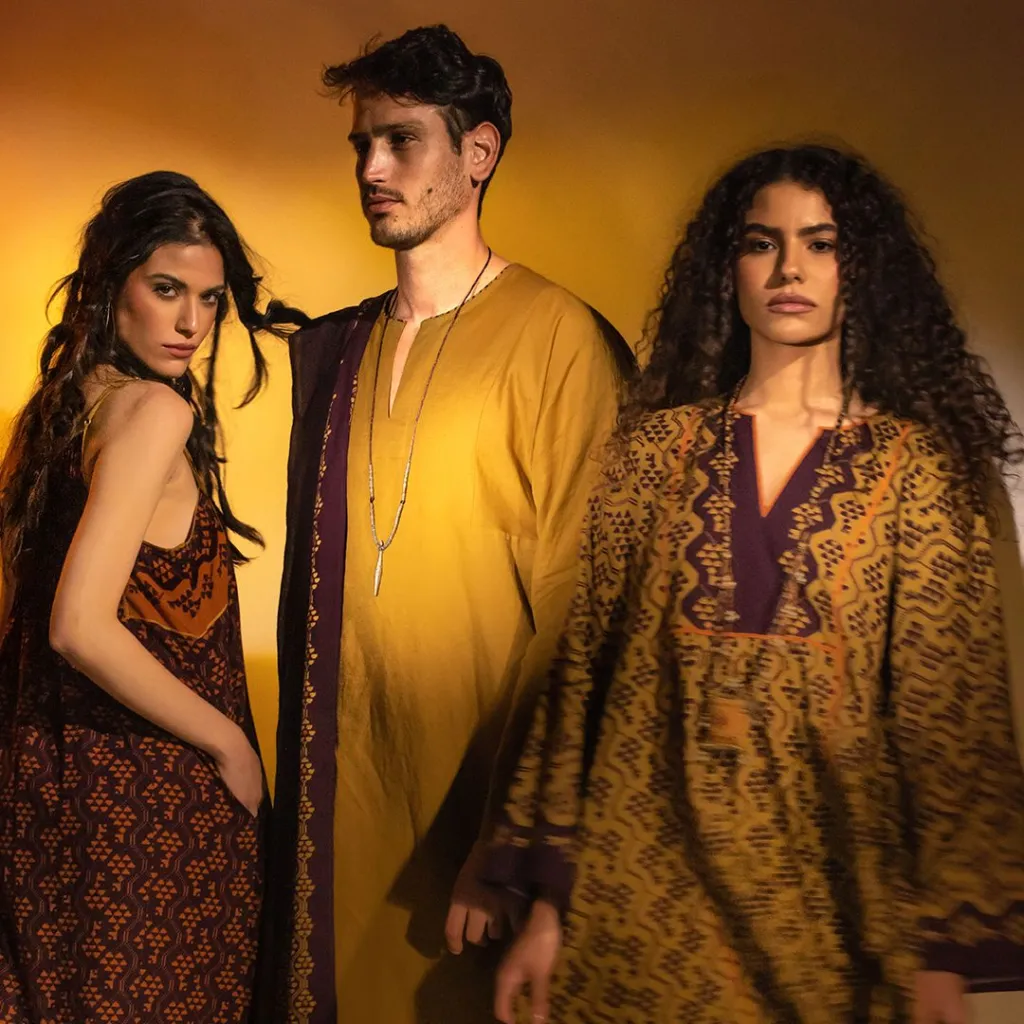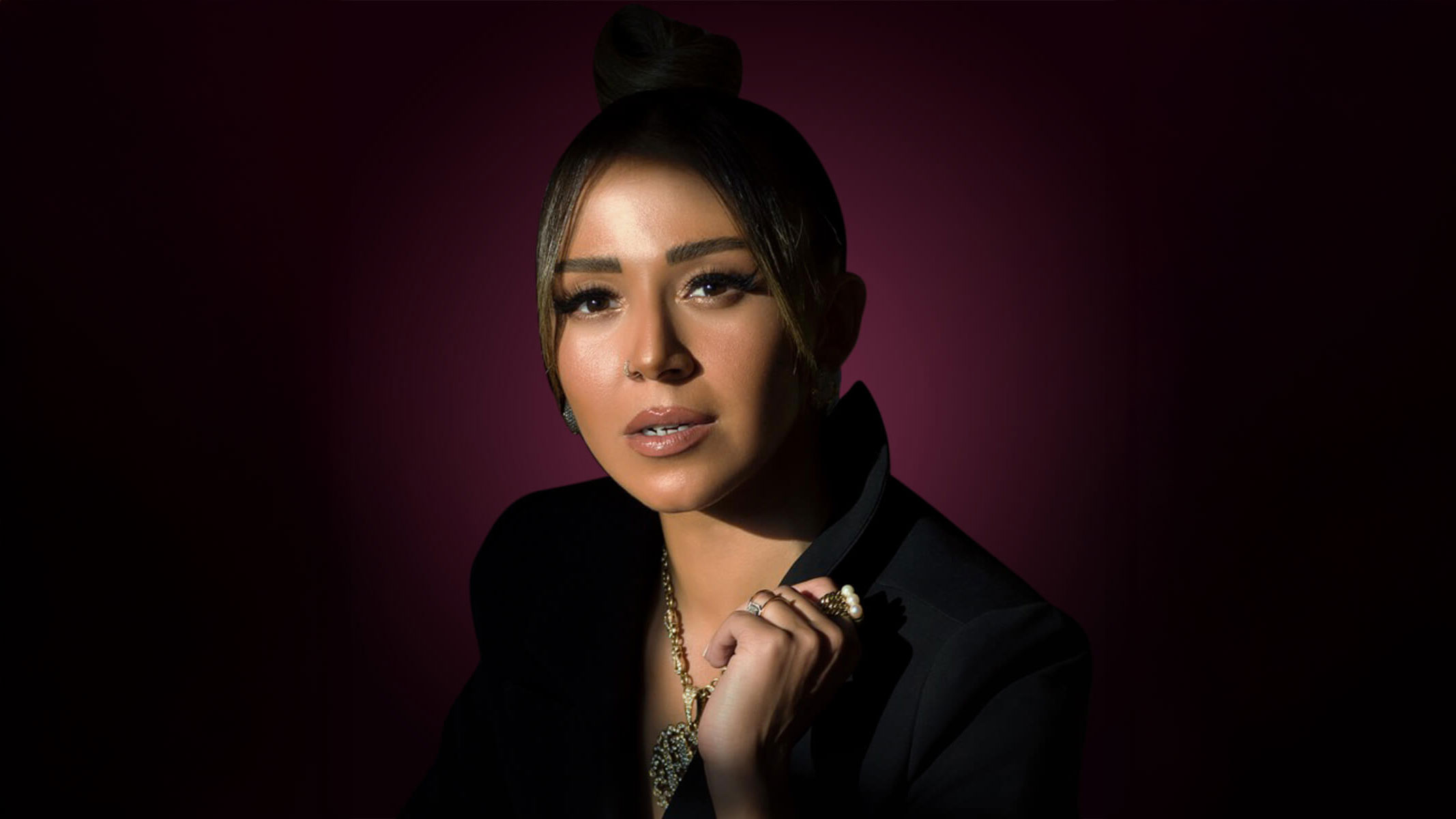Heritage in Cairo doesn’t live in museums.
It lives in fingertips — the ones that twist thread into embroidery, that hammer brass into shape, that weave linen under the same rhythm as their ancestors did centuries ago.
For decades, these crafts were fading — dismissed as nostalgic, too “folkloric” for modern fashion. But a new generation of Egyptian designers is quietly rewriting that story. They are reclaiming craft not as memory, but as innovation.
“We’re not reviving heritage,” says Rana El Nemr, a textile designer based in Mokattam. “We’re continuing it.”
1. The Fabric of Memory
In an old house in Fustat, looms hum softly as threads of unbleached cotton slide between wooden beams. The women here belong to Tanis, a local weaving collective founded by Heba El Khawanky, dedicated to preserving Egypt’s linen heritage.
“Egyptian linen was once the best in the world,” Heba says, holding up a bolt of handwoven fabric. “The Pharaohs wrapped their dead in it. We should be wrapping our lives in it.”
Her weavers use techniques passed down for generations, blending them with natural dyes made from hibiscus and henna. The result is linen that breathes like the desert — soft, matte, alive.
Their fabrics now appear in collections by young designers such as Cloud & Quill and KAI Collections, proving that authenticity can be the most modern statement of all.
“Our ancestors didn’t call it sustainability,” Heba smiles. “They just called it wisdom.”
2. Jewelry as Storytelling
Across the Nile, in a small workshop in Garden City, jewelry designer Mariam El Ashry, founder of Azza Fahmy Jewellery, sits sketching a cuff engraved with Arabic calligraphy. Each word is chosen carefully — hob, amal, nour — love, hope, light.
Her designs blend Pharaonic motifs with Arabic poetry, combining ancient craft with literary grace. “Jewelry is our language,” she says. “We wear our stories before we tell them.”
Azza Fahmy’s atelier employs over 200 artisans trained in the traditional art of jewelry chasing, a technique nearly lost before the brand revived it. Every piece takes weeks — sometimes months — to complete.
In a world of fast fashion, such slowness feels radical. “The world may have moved on,” Mariam says, “but our hands remember.”
3. Threads of Identity
In Downtown Cairo, designer Nour El Sherif (founder of Nuun) repurposes old cotton fabrics into contemporary silhouettes — asymmetrical dresses, cropped jackets, and modern abayas. “I design with ghosts,” she says. “Every piece of fabric has lived before.”
Her recent collection, ‘Inheritance,’ used leftover embroidery from her grandmother’s wedding chest. “It wasn’t about nostalgia,” she says. “It was about lineage — how women’s stories survive through fabric.”
At her last pop-up show, she invited her mother and grandmother to sit front row. When the lights dimmed and the music began, her grandmother wept. “She saw her own hands on that runway,” Nour says softly.
“That’s the point,” she adds. “We’re not copying the past. We’re conversing with it.”
4. The Men Behind the Thread
In Sohag, Upper Egypt, a group of young men gather every morning in a workshop filled with looms. They are part of Khayamia Revival Project, a government-backed initiative that trains artisans in khayamiyya — the traditional tentmaking appliqué that once adorned weddings and pilgrimages.
Under the mentorship of master craftsman Ahmed Gaber, they’ve begun adapting the ancient geometric patterns for wall art, furniture, and couture. “Tourists used to buy these as souvenirs,” Ahmed says. “Now, designers buy them as collaborations.”
Indeed, labels like Naier and Omar Joseph are integrating khayamiyya panels into modern gowns and coats, transforming what was once seen as craft into couture.
“Heritage isn’t rural,” Ahmed insists. “It’s revolutionary.”
5. From Villages to Runways
The movement isn’t confined to Cairo. In Fayoum, women artisans under the Tawasol Foundation embroider landscapes onto canvas totes and linen scarves, selling them online to support their families.
In Siwa, the Siyaha Project promotes local weaving using palm fibers and olive-dyed cotton.
Young brands like Cottonique and El Baz Studio source directly from these workshops, blending high design with social purpose.
“You don’t need Paris to create luxury,” says designer Salma El Baz. “You need respect — for people, process, and place.”
This interconnected ecosystem has given rise to a new identity — one where Egyptian design no longer imitates, but originates.
6. Modern Heritage
In recent years, Egyptian brands have begun reintroducing motifs from Nubian, Bedouin, and Coptic traditions into modern garments — but with subtlety, not spectacle.
At a concept store in Zamalek, mannequins wear linen suits embroidered with gold thread inspired by Sinai’s tribes. At another, silk scarves bear the motifs of ancient temple murals reinterpreted in contemporary geometry.
“It’s not about costume,” says art director Hadi Badrawy. “It’s about continuity.”
This shift has caught international attention. Vogue Arabia, Wallpaper, and Harper’s Bazaar have all spotlighted Egyptian designers redefining heritage for a global audience. But at home, it’s about something deeper — belonging.
7. The Return of the Hand
Technology dominates most industries, but Egypt’s design revival is refreshingly analog. Every piece is touched, shaped, measured, and mended by hand.
That tactile intimacy — thread through needle, hammer through brass — carries a kind of soul no machine can replicate.
It’s not about rejecting modernity; it’s about reclaiming authorship.
“When you work with your hands,” says craft educator Maha Kamel, “you leave fingerprints on time.”
Those fingerprints are Cairo’s true heritage — not monuments, but moments.
8. What Heritage Means Now
For Egypt’s new generation of designers, heritage isn’t a burden or a slogan. It’s a dialogue between memory and modernity.
“We’re not looking backward,” says Nour El Sherif. “We’re looking deeper.”
In every hem, every engraving, every imperfect weave, there’s an echo of the people who came before — and the ones who will come after.
Heritage isn’t about the past. It’s about continuity — the thread that refuses to break.




